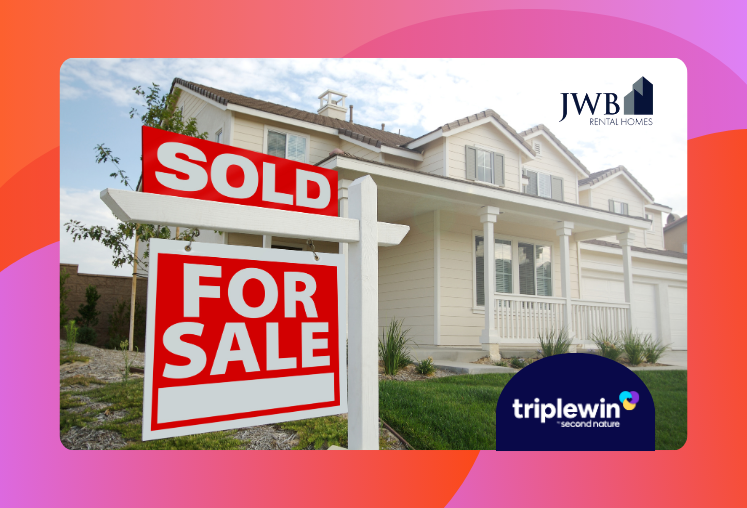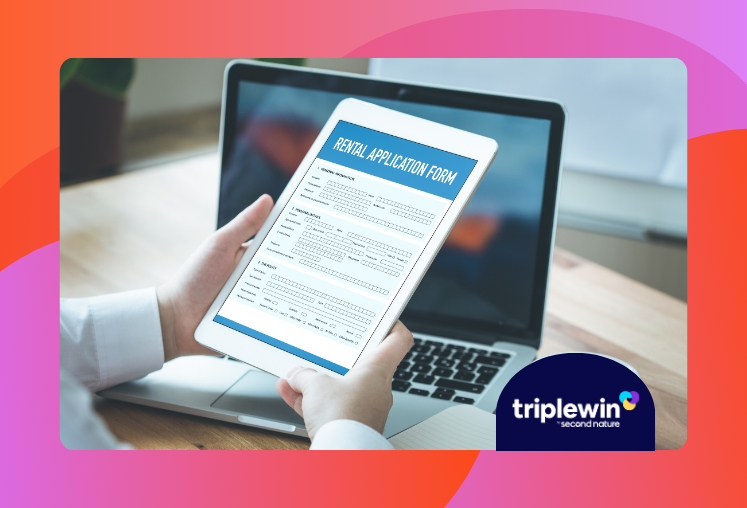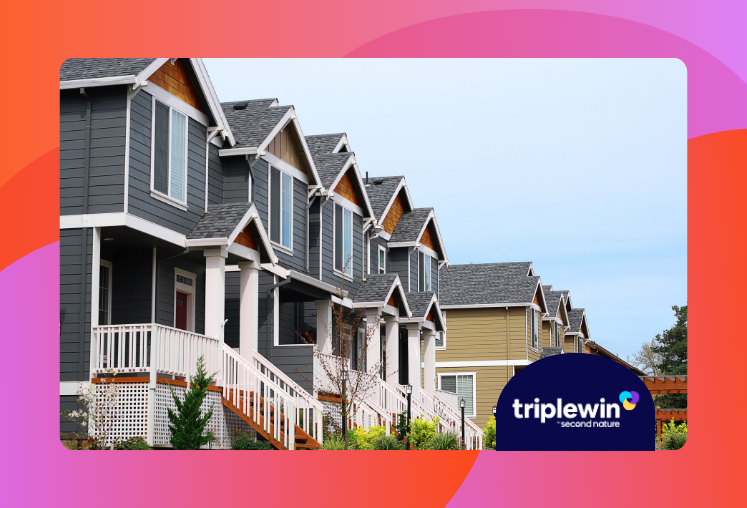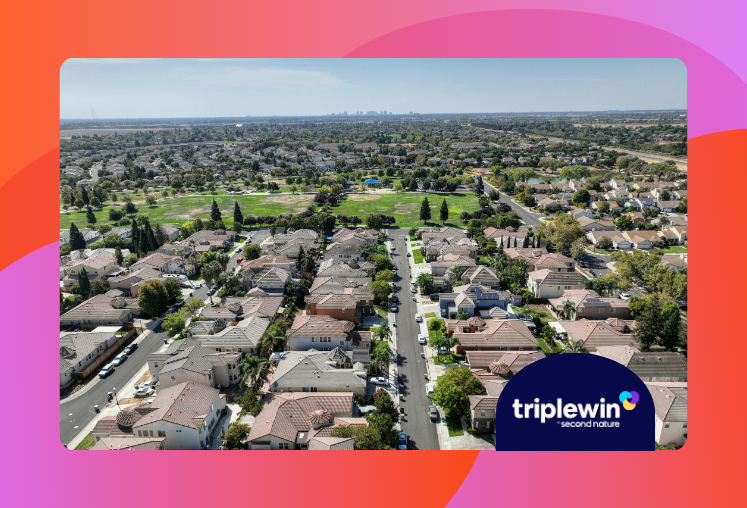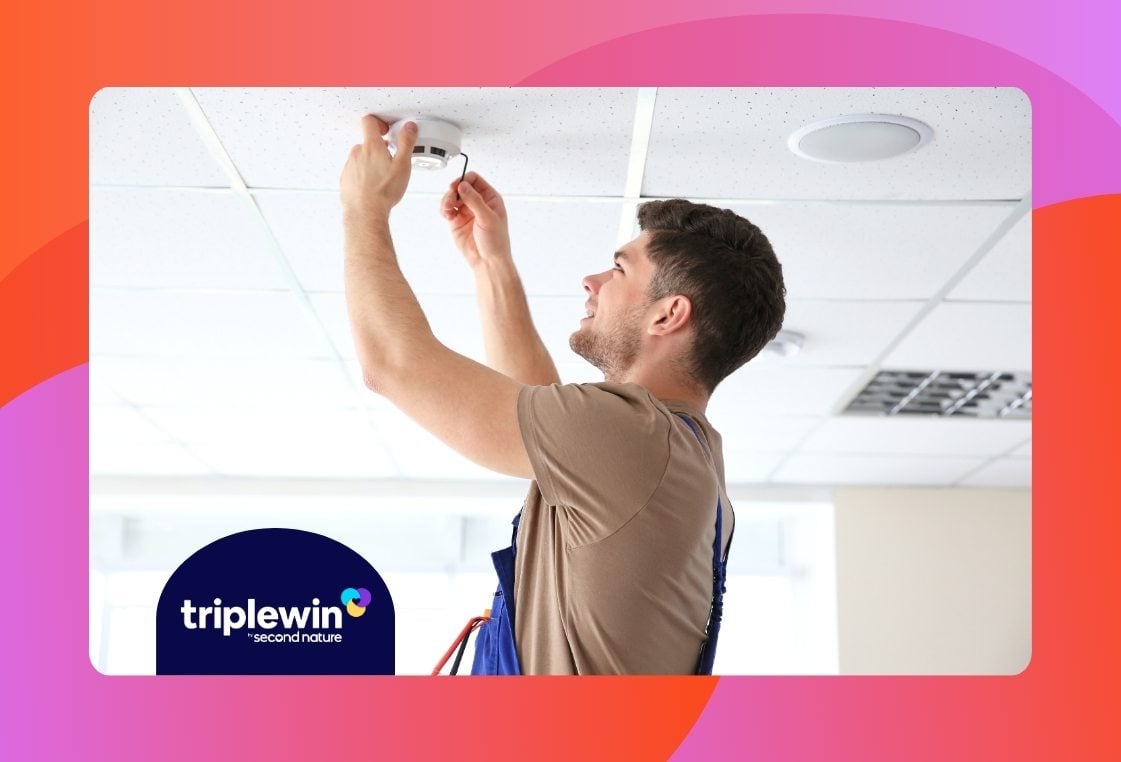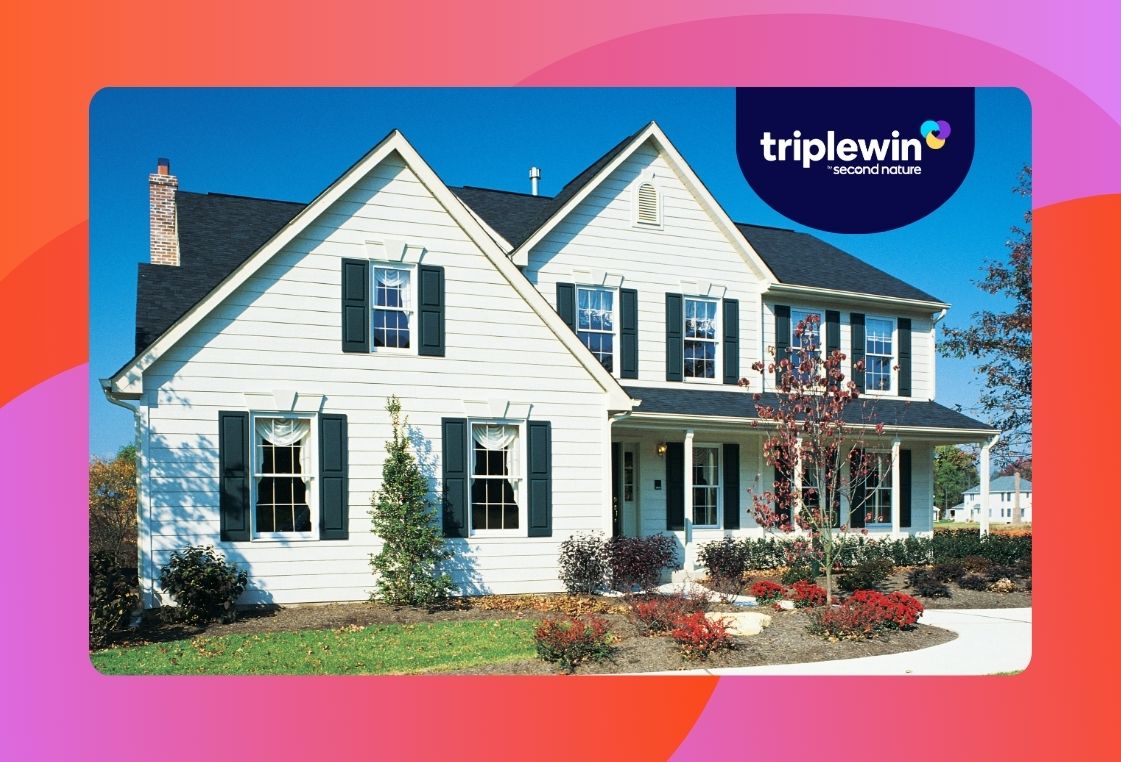
9 Property Management Leadership Training Programs for Regional Managers and Directors
TL;DR: Property management leaders need skills beyond operations to coach teams and scale portfolios. This guide compares nine training resources: industry credentials like NARPM's MPM and IREM's CPM build personal credibility, platforms like NCHM provide scalable team training, and business courses fill strategic gaps. The most successful companies combine certifications for leadership positioning, consistent frameworks for teams, and targeted development for specific challenges rather than treating all training the same. Property management leaders face a challenge: the skills that make you great at operations won’t necessarily make you great at leading teams. Managing leases and maintenance isn’t enough when you’re coaching property managers, building company-wide systems, or scaling culture across portfolios. Operational expertise hits a ceiling without strategic business thinking and frameworks for leadership. We've compared nine training resources that property management leaders actually use for personal development and team building. Some help develop your own leadership capabilities. Others provide scalable platforms for training entire teams. All of them address the business and people management challenges that operational training ignores. For frontline property managers and new hires looking to build foundational skills, check out our guide to the best online property management courses and workshops. That resource focuses on operational training for individuals getting started. This guide addresses the business leadership and strategic management skills you need as you move into regional, director, or executive roles. 1. NARPM's Master Property Manager (MPM) Best for: Residential property management experts managing 500+ units who want industry recognition. The Master Property Manager is NARPM's highest designation, designed for professionals who have already completed their Residential Management Professional (RMP) designation and proven themselves over five years. Having an MPM speaks to residential expertise at scale and signals to investors that you've reached elite status. What you gain: Recognition as a leader in residential property management Enhanced credibility with investors and property owners Pathway to CRMC designation for your firm Demonstrated commitment to professional excellence and industry service To earn an MPM, you must: Be a current NARPM member Have achieved the RMP designation Hold a real estate license for 5 years (if required by your state) Manage at least 500 units over a 5-year period Maintain a minimum of 50 units during and at completion of candidacy Complete 24 hours of NARPM‑approved education Complete elective work through service to NARPM, local chapters and the property management industry Attend at least two NARPM National Conventions Provide letters of recommendation from two MPM designees and three clients Leadership application: This distinguishes your personal brand and can elevate your entire company's positioning in competitive markets. 2. IREM's Certified Property Manager (CPM) Best for: Leaders who want a widely recognized credential that blends operations, asset management, and financial performance. IREM’s CPM is one of the most established certifications in property management. It’s often the next step for managers who want to expand beyond day-to-day operations into bigger-picture financial and portfolio responsibilities. It’s designed to help leaders understand how properties perform as investments, not just how they function operationally. What you gain: A deeper understanding of financial performance, asset management, and investment analysis Broader credibility across residential, commercial, and mixed-use portfolios Skills for evaluating property performance through an ownership and investor lens A respected credential that strengthens your professional profile at any stage of leadership Typical CPM requirements include: At least 36 months of qualifying real estate management experience Completing the required coursework by selecting one of IREM’s approved education tracks Satisfying the management plan requirement by passing one of the designated management plan exams Completing the IREM ethics course and passing the accompanying exam Maintaining active membership with current national and chapter dues Holding a real estate license if your state requires one, or formally confirming that you are not required to be licensed Interviewing with, and being approved by, your local IREM chapter Passing the CPM certification exam Leadership application: CPM is primarily a professional credential that strengthens an individual leader’s expertise and credibility. It’s not designed for scalable team training. Most candidates are mid- to senior-level managers preparing for higher-responsibility roles, not frontline staff. 3. NAR's Certified Property Manager through IREM Best for: Leaders already participating in NAR’s REALTOR ecosystem who want the CPM credential while preserving their NAR-affiliated status. This is the same CPM designation offered through IREM, but maintained through the NAR membership/affiliate framework. The curriculum, requirements, and credibility are identical. The distinction is primarily about professional affiliation and networking channels. Why choose this path: Integrates property management credentialing with broader real estate professional development Offers access to NAR's resources, advocacy, and connections Provides the same worldwide recognition as direct IREM enrollment Leverages existing NAR relationships and membership benefits To earn this designation: Requirements are identical to direct IREM CPM enrollment (see #2 above) Leadership application: Use this route if your professional identity or licensing channels run through NAR. 4. NCHM's certification programs Best for: Growing companies that need consistent, professional-grade training they can roll out across entire teams. The National Center for Housing Management offers what regional managers actually need: consistent, professional training you can deploy across entire teams. NCHM specializes in property-level competency across four pillars: occupancy, management, maintenance, and financial management. Certified Manager of Housing (CMH) Good for: Property-level managers who need a stronger grasp of the performance metrics that drive site success New managers stepping into full-site responsibility What they learn: Core performance metrics: Understanding how occupancy rates, vacancy loss, turnaround time, and work order productivity tie directly to property health Diagnostics and problem-solving: Identifying the root causes of performance issues and applying NCHM’s structured process to correct them Leadership style awareness: How personal management tendencies affect team effectiveness, productivity, and communication Building high-performing teams: How to lead site staff, manage conflict, motivate teams, and create an accountable, collaborative environment Certified Financial Specialist (CFS) Good for: Managers who oversee property financials and need stronger budgeting and reporting skills Leaders responsible for financial performance across multi-family or senior housing communities What they learn: Owner priorities: How to align day-to-day decisions with the financial objectives owners care about most Accounting fundamentals: Core finance concepts, like cash vs. accrual accounting, that shape property-level reporting Reading financial statements: How to interpret income/expense reports and balance sheets to guide operational choices Variance analysis: Spot performance issues early by comparing actuals to budget and pinpointing what’s driving gaps Building accurate budgets: Research and forecast revenue, plan expenses and capital needs, and develop a reliable 12-month budget Turning data into decisions: Use financial trends and metrics to adjust operations, improve performance, and communicate results with confidence Certified Manager of Maintenance (CMM) Good for: Property managers, lead maintenance techs, and supervisors who oversee day-to-day maintenance operations Teams looking to elevate productivity, reduce reactive work, and manage costs more intentionally What they learn: Building a strong maintenance program: How to structure workflows, from work identification to work-order tracking, purchasing, inventory, staffing, and performance monitoring Practical productivity management: The difference between applied vs. unapplied time, and how to streamline tasks so teams get more done without burnout Cost awareness and smarter spending: How to break down the true drivers behind maintenance expenses and make choices that stretch budgets without sacrificing quality Better planning, fewer emergencies: Shift from constant on-demand fixes to a healthier mix of planned and preventative maintenance that keeps the property stable, predictable, and easier to manage Fully online format: The course and exam are delivered virtually, allowing up to one week after finishing the course to complete the certification test Registered Housing Manager (RHM) Good for: Experienced housing professionals who have completed all four NCHM Pillar programs Leaders seeking a capstone credential demonstrating mastery of operational, financial, maintenance, and occupancy management What they learn: Integrated property analysis: How to apply knowledge from all four pillars to assess and improve real property performance Practical problem-solving: Using structured tools to identify operational, financial, and maintenance issues and implement effective solutions Independent project execution: Prepare a comprehensive Property Assessment independently, demonstrating ability to synthesize data and make strategic decisions Expert evaluation: Submit the Property Assessment for review by a panel of senior NCHM faculty for certification approval Portfolio-level readiness: The process reinforces skills needed to manage multiple sites and complex properties, ensuring leaders can drive measurable performance improvements Leadership application: For managers who need consistent training across different markets, NCHM creates shared language, unified standards, and measurable performance expectations. It provides the structure that coaching alone can’t scale. 5. 360training's compliance and licensing platform Best for: Multi‑state portfolios with heavy compliance burden: teams juggling licensing, continuing education, and regulatory training across jurisdictions. Different licensing requirements, continuing education mandates, and regulatory frameworks across markets create administrative burden that pulls leaders away from strategic work. 360training solves this through their Learning Management System. What 360training offers: State‑approved licensing, post‑licensing, and continuing education courses across 32 states (state requirements vary; always confirm with your licensing board) Centralized Learning Management System to enroll staff, track progress, and generate reports Corporate accounts with volume pricing and dedicated support Tools to maintain ongoing compliance and manage multi-state training efficiently Leadership application: This isn’t designed as a leadership‑development program. It's infrastructure that frees leaders from compliance administration so you can focus on actual development. 6. Coursera business and leadership courses for property managers Best for: Leaders who need business skills that traditional property management certifications don’t cover. Property management leaders often need business skills beyond operational management: financial modeling, data analysis, organizational behavior, strategic planning. Coursera provides access to university-level business courses from institutions like Wharton, Michigan, and Stanford. Course benefits: University-level courses in financial modeling and investment analysis relevant to real estate Training in organizational behavior and people management for leading teams effectively Strategic decision-making, business analytics, and data-driven planning Operations management and process optimization to scale portfolios efficiently Leadership application: These courses provide business-education fundamentals; applying them to property management context requires translation and adaptation. 7. Penn Foster's Property Management Certificate Best for: People who want a flexible, self‑paced introduction to property management fundamentals. Penn Foster offers an online Property Management Certificate: a self‑paced program that typically takes 6 months on a fast‑track schedule (or up to about a year, depending on how much time you dedicate weekly). What the program covers: Leasing fundamentals and resident relations, including resident communications, lease negotiation, turnover scheduling, and evaluating credit/rental applications Building maintenance and property upkeep basics, along with general maintenance oversight and resident-property relations Financial accounting and property valuation fundamentals, giving learners a grounding in handling financials at a property level Real estate law, risk management, and fair‑housing compliance; covering the legal/regulatory knowledge a property manager should have Because the program is entirely online, students can begin any time, move at their own pace, and benefit from digital study guides, quizzes, and ongoing support, making it ideal for working professionals needing flexibility. Leadership application: This credential provides foundational knowledge to support newer managers or assistants and refresh existing staff on operations, compliance, leasing, and financial basics. 8. NARPM leadership training and professional development workshops Best for: Managers looking to refine people management, company operations, or business growth skills through flexible, short-form training. NARPM offers courses, webinars, and workshop-style sessions for property managers transitioning from operations to team leadership or managing company-wide processes. Offerings are modular, allowing leaders to focus on people management, company culture, financial oversight, or operational systems. Program highlights: Online and virtual courses covering communication, team building, negotiation, supervision, and process structuring Conference and chapter workshops on scaling operations, cash-flow management, building culture, and managing property performance Peer learning and networking with other residential property managers Leadership application: Short, targeted training to solve specific management challenges and strengthen supervisory skills. 9. IREM online courses and continuing education Best for: Targeted skill development without committing to full certification programs. Beyond CPM certification, IREM offers online courses on specific leadership and operational topics. Courses range from two-hour webinars to multi-day programs and allow leaders to focus on the areas they need most. Available topics: Financial management and analysis for decision-makers Sustainability and energy management strategies Crisis management and business continuity planning Technology implementation and digital transformation What you get: Free webinars and discounted courses Continuing education credits for CPM requirements Flexible learning to address skill gaps Leadership application: You can target specific gaps in your knowledge without re-certifying or committing to lengthy programs. For CPM holders, these satisfy continuing education requirements while building new capabilities. How property management companies build leadership development programs Companies succeeding at property management leadership development don't pick one approach. They take hybrid strategies that address different needs: Personal credibility through advanced certifications. Regional directors and VPs pursue CPM or MPM designations because investors expect these credentials. The designation signals strategic thinking, not just operational skill. When presenting to stakeholders, it shows you’ve invested in executive-level expertise. Team consistency through scalable platforms. Companies can’t rely on each property manager taking random courses and hoping quality stays consistent. Platforms like NCHM and 360training provide common frameworks, shared language, and measurable standards across teams. Business skills outside real estate. Top leaders complement certifications with courses in financial modeling, data analysis, and organizational management. Running a property management company requires business skills that managing properties alone doesn’t teach. Targeted solutions for specific gaps. For challenges like adopting new technology, building culture, or managing transitions, leaders turn to workshops or consultants for focused guidance rather than another broad certification. The mistake most companies make is treating leadership development like operational training. Sending directors to the same workshops as new property managers doesn’t create strategic thinkers. Leadership requires different development paths. Second Nature helps make time for what matters The biggest barrier for property management leaders is time. You want to develop your skills and your team, but daily fires, resident issues, and operational demands leave little capacity for growth. Second Nature's Resident Experience Package removes routine tasks from your team’s plate. Filter changes happen automatically, HVAC maintenance is scheduled without coordination, and residents get support without creating staff tickets. When properties implement RXP, teams gain the bandwidth to focus on strategic work instead of reactive tasks. Property managers can coach leasing agents. Regional managers can build systems rather than fight fires. That capacity makes training programs effective instead of overwhelming. Request a demo to see how Second Nature frees up your team's time so they can focus on growth, development, and the work that actually scales your business. FAQ What's the difference between CPM and MPM certifications? CPM (Certified Property Manager) comes from IREM and focuses on financial performance, asset management, and investment analysis across residential, commercial, and mixed-use properties. MPM (Master Property Manager) is NARPM's highest residential-only designation, requiring 500+ units and five years of experience. CPM gives you broader credibility across property types and ownership conversations. MPM signals elite status in residential management. Choose CPM if you're moving toward asset management and diverse portfolios. Choose MPM if you're deepening expertise in residential property management. How long does it take to get a property management certification? NCHM certifications can be completed in weeks with consistent study. Penn Foster's certificate typically takes 6-12 months at your own pace. IREM's CPM requires 36 months of qualifying experience plus coursework and exams, usually taking 1-2 years once you begin. NARPM's MPM requires five years of experience managing 500+ units before you can apply. For quick credentials, focus on NCHM or 360training. For long-term professional positioning, expect CPM or MPM to take years. Do property managers need certifications to advance to leadership roles? No, but they help in specific situations. Certifications matter most when competing for positions with institutional owners, presenting to investment committees, or elevating your company's market positioning. Many successful leaders built careers on operational results and team development without formal credentials. What matters more is whether you can coach teams, build scalable systems, and think strategically about portfolio performance. Certifications accelerate credibility in competitive markets but don't replace leadership capability. Which property management training is best for team development vs individual credentials? For team development, choose NCHM or 360training. Both provide scalable platforms with consistent training, shared frameworks, and measurable standards across entire teams. For individual credentials that elevate personal positioning, pursue CPM or MPM. These signal strategic expertise to investors and stakeholders. Coursera and IREM's online courses fill specific skill gaps without full certification commitments. If you're building team capability, invest in scalable platforms. If you're strengthening executive credibility, pursue advanced designations. Can you get property management training online? Yes. NCHM delivers all certifications virtually with online exams. 360training operates entirely through web-based learning. Penn Foster's certificate is self-paced and fully online. Coursera provides digital courses from major universities. IREM offers online courses and webinars for CPM requirements and continuing education. NARPM provides online courses and virtual workshops. The only programs requiring significant in-person participation are NARPM's MPM (convention attendance required) and some IREM chapter requirements for CPM approval.
December 9, 2025
Read more



